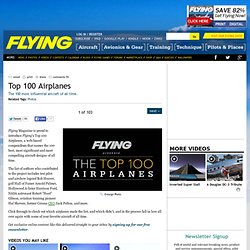

TARRAGON. Joby Aviation. Welcome on LH Aviation.com. L'hydravion d'Howard Hughes. Criticism of the Space Shuttle program. It failed in the goal of achieving reliable access to space, partly due to multi-year interruptions in launches following Shuttle failures.[7] NASA budget pressures caused by the chronically high NASA Space Shuttle program costs have eliminated NASA manned space flight beyond low earth orbit since Apollo, and severely curtailed more productive space science using unmanned probes.[8] NASA's promotion of and reliance on the Shuttle slowed domestic commercial expendable launch vehicle (ELV) programs until after the 1986 Challenger disaster.[9] Purpose of the system[edit] "Space Transportation System" (NASA's formal name for the overall Shuttle program) was created to transport crewmembers and payloads into low Earth orbits.[10] It would afford the opportunity to conduct science experiments on board the shuttle to be used to study the effects of space flight on humans, animals and plants.

Other experiments would study how things can be manufactured in space. 30 years of Space Shuttle history. Cessna 400. Columbia 400 Cessna's mockup of the Corvalis TTx; featuring the Garmin G2000 avionics suite.

The Cessna 400 Corvalis TT is a single-engine, fixed-gear, low-wing general aviation aircraft built from composite materials by Cessna Aircraft.[2] The Cessna 400 was originally built by Columbia Aircraft as the Columbia 400.[3] From 2013 the aircraft was built as the Cessna TTx Model T240. Design and development[edit] The Cessna 400 was derived from the normally aspirated Columbia 300, which in turn was derived from the Lancair ES kit aircraft.[4]
Top 100 Airplanes. Flying Magazine is proud to introduce Flying's Top 100 Airplanes, a web-based compendium that names the 100 best, most significant and most compelling aircraft designs of all time.

The list of authors who contributed to the project includes test pilot and airshow legend Bob Hoover, golf Hall of Famer Arnold Palmer, Hollywood A-lister Harrison Ford, NASA astronaut Robert "Hoot" Gibson, aviation training pioneer Hal Shevers, former Cessna CEO Jack Pelton, and more. Click through to check out which airplanes made the list, and which didn't, and in the process fall in love all over again with some of your favorite aircraft of all time. Flight Training: Flight Training. Flying Like the Pros. Calculating Density Altitude with a Pencil. We all know that as density altitude increases, there is a corresponding decrease in the power delivered by our airplane’s engine and the effectiveness of our propeller.

For a typical non-turbocharged light single-engine airplane, this can result in a takeoff roll that’s 25 percent longer for every 1,000 feet of elevation above sea level. The most dangerous combination of conditions are a heavy load, unfavorable wind, high temperature, high airport elevation and high humidity. Transitioning through Class B Airspace. Tips for VFR pilots wary of entering Class B airspace.

Many VFR pilots are apprehensive about requesting transitions through Class B airspace, figuring it’s less of a hassle (for them and frenzied controllers) to simply dive down under, climb over or skirt around these busy swaths of sky surrounding the nation’s biggest airports. But a fear of keying the microphone and talking to a controller shouldn’t stop you from requesting clearance through Class B airspace if it makes sense for a particular flight.
The benefits of flying in Class B airspace often make such requests well worth the minimal effort required on your part, both in terms of time saved and the advantages of being in contact with ATC. 3-D Gigapixel Panoramic Photographs: Space Shuttle Discovery Flight Deck. Vg-diagram.jpg (750×493)
Videos.